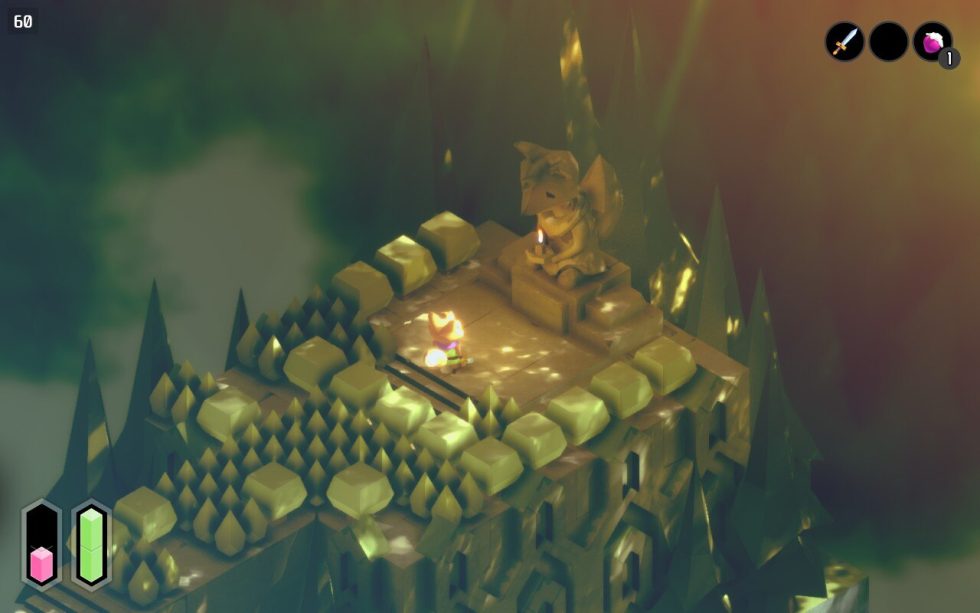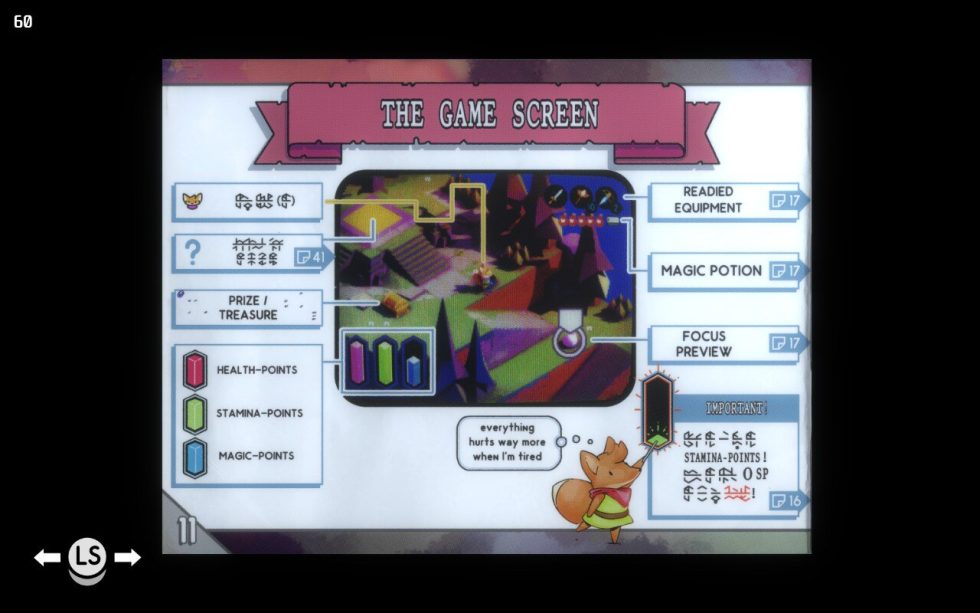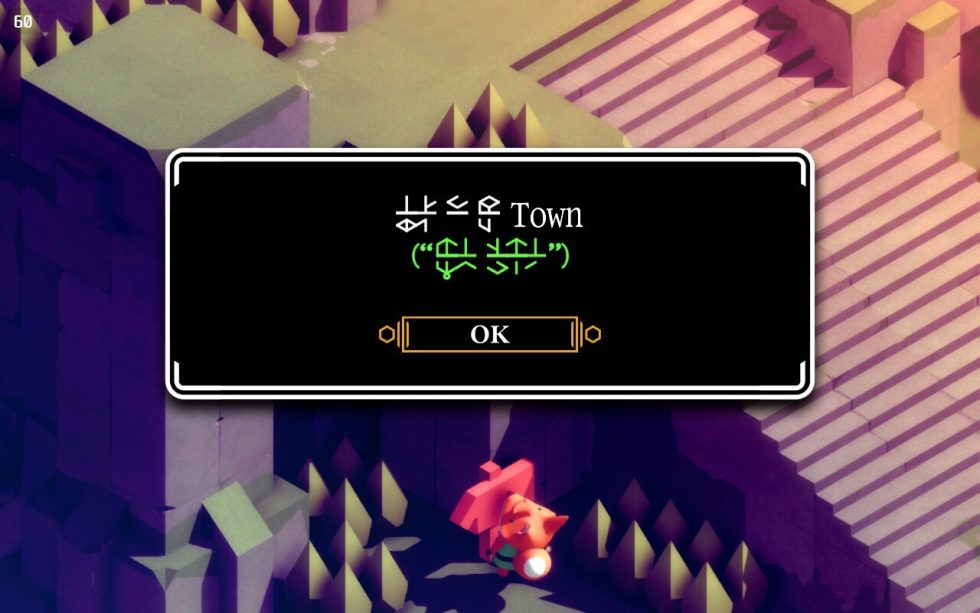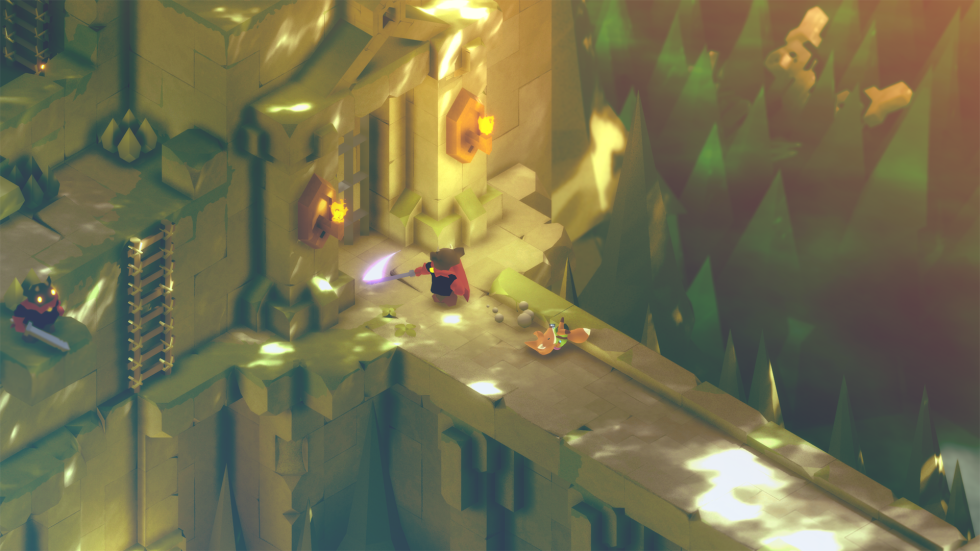
When I reviewed The Legend of Zelda: Link's Awakening on Switch in 2019, I lamented its stubborn adherence to the past. I don't necessarily blame Nintendo for reproducing the Game Boy classic's elements wholesale, but the remaster's gorgeous, modern aesthetic, complete with 3D models replacing the original 2D sprites, started turning gears in my head.
Could a modern game have classic-yet-fresh gameplay that feels as good as this remaster looks? I asked myself. What if a beautiful, top-down adventure could both evoke 8-bit Zelda nostalgia and implement more modern mechanics and ideas? In the modern gaming era, we've seen all manner of games borrow liberally from Nintendo's classic adventuring series, but they've mostly been on the 3D side.

This week's Tunic, a six-years-in-the-making indie adventure made primarily by sole developer Andrew Shouldice, is a rare example of a truly worthy 2D Zelda homage. It even surpasses other recommended modern titles like Death's Door, Hob, and, yes, Nintendo's own Link Between Worlds.
For more, please flip to a page that you haven’t found yet

This review, I'm afraid, will be vague out of necessity, as Tunic makes clear in its opening moments that it's meant to be peeled back one instruction manual page at a time.
That's not a metaphor. Within minutes of beginning your top-down journey in Tunic as a cartoony, low-poly fox dressed in titular garb, you stumble across a glowing square. Pick it up, and a tiny piece of paper flies toward the screen and fills your view. In terms of size, orientation, and hand-drawn art, the page looks like it's been ripped from a 1980s NES instruction manual. It's not page one. And it's covered in a mix of English words and gibberish characters.

That gibberish appears on signs, as well, but Tunic doles out enough English words to clarify basic directions and instructions. And it evokes enough Zelda-like systems to goad players into running, attacking, and using items, while later instruction manual pages clarify Tunic's mechanics at length. In particular, its Souls-like convention of a dodge-roll, as managed by a stamina meter, gets a frame-by-frame breakdown of exactly how a dodge-roll's timing and temporary invulnerability works. And that explanation, like many others in Tunic, comes with an adorable hand-drawn fox somersaulting across the virtual instruction page.
Instruction manual transmission

I played Tunic's most recent free demo, which launched last year on Xbox consoles, so I can confirm that its devs responded to player feedback and tweaked combat in the final game to make its early stages feel gentler. Still, these milder sections hint at Souls. Your fox's health is precious, and while you can storm through baddies haphazardly, that will get your canine killed before long. Stop, study enemy attack patterns, dodge, strike, and survive.

Tunic's penalty for death may sound familiar to Dark Souls players: You'll revive at the last bonfire you touched (which always refills your health and revives non-boss enemies), and a portion of your in-game coins must be recovered from your point of death. This is a bit gentler than Souls, as Tunic doesn't punish you for not blowing through in-game cash. Which is good, because Tunic takes a while before telling players what its coins do.

The same goes for a lot of what you collect in Tunic. What's up with this inventory of special coins? What about these square patches with drawings on them? Did I just pick up a potion or a bomb? Tunic's doling of items is similar to the blind item variety in Binding of Isaac, though Tunic's scattered instructions eventually offer in-game tips, along with a bit of counter-logical advice for how some items work. I found myself delighted every time a newly discovered instruction page essentially told me, "Go ahead, do things that you might assume are wasteful in these games. We'll take care of you."
reader comments
73